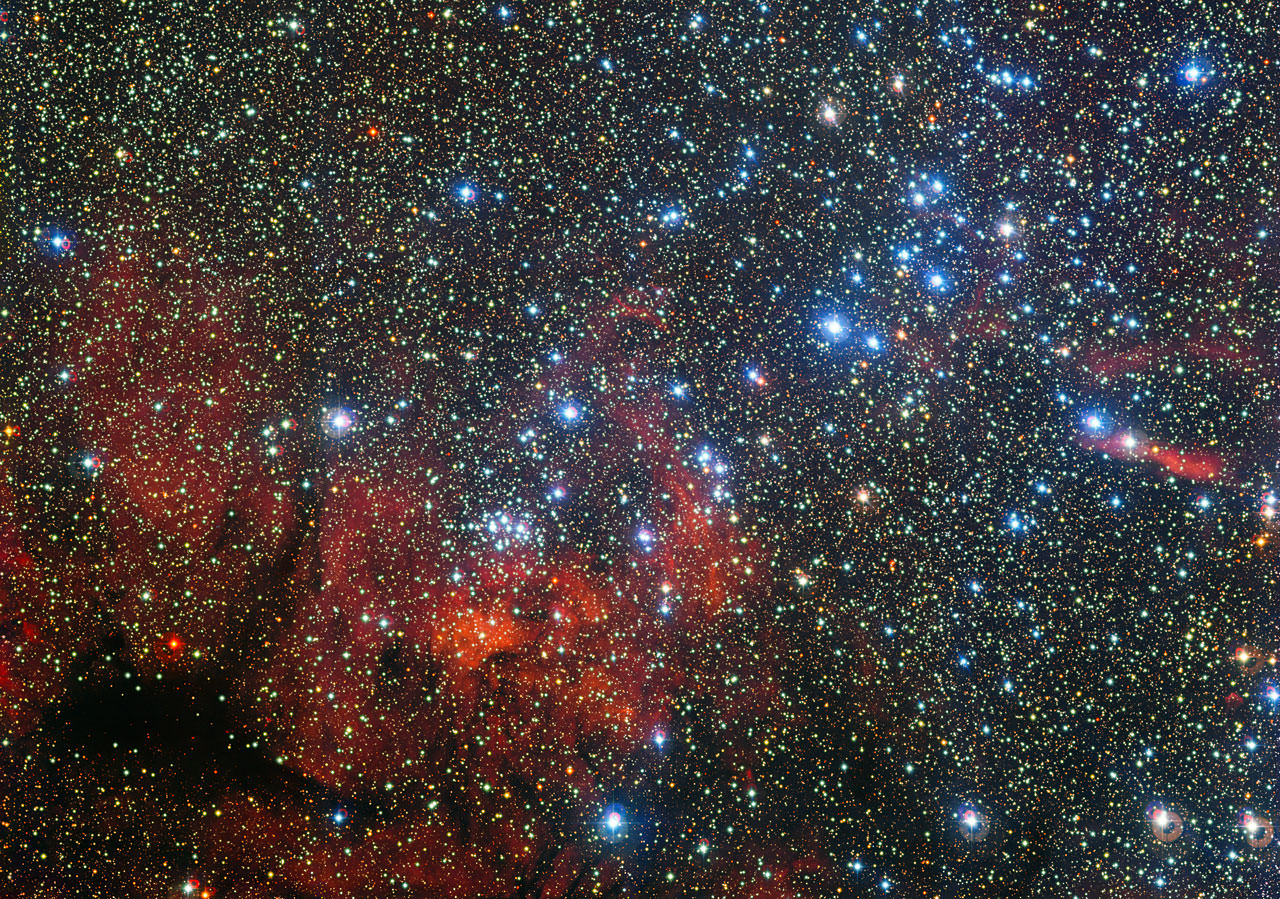Such stars, much science! Shining in front of darker dust, this star cluster (NGC 3590) is about 7,500 light-years from Earth. And because the cluster is located in a spiral arm of the Milky Way, looking at the new European Southern Observatory can help astronomers figure out more about our how galaxy came to be.
“These spiral arms are actually waves of piled up gas and stars sweeping through the galactic disc, triggering sparkling bursts of star formation and leaving clusters like NGC 3590 in their wake. By finding and observing young stars like those in NGC 3590, it is possible to determine the distances to the different parts of this spiral arm, telling us more about its structure,” ESO stated.
“Typical open clusters can contain anything from a few tens to a few thousands of stars, and provide astronomers with clues about stellar evolution. The stars in a cluster like NGC 3590 are born at around the same time from the same cloud of gas, making these clusters perfect test sites for theories on how stars form and evolve.”
As a spiral galaxy, the Milky Way has multiple “arms”. The one this cluster is located in is called the Carina spiral feature (part of the Carina-Sagittarius minor arm) after the constellation in which it is “most prominent.”
Source: European Southern Observatory


ESA’s Gaia will also yield an accurate distance to such clutters in “nearby” spiral arms